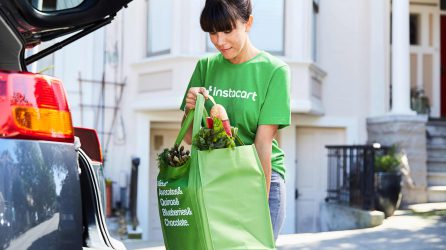Does paid retail search help organic SEO? Here’s what CPGs need to know

Presented by:
Josi Mathar — 2021
One of the most common questions I get asked about search strategy is this: After you’ve spent money on paid-for search, do you also stay in organic search? Or do any benefits disappear as soon as the investment is gone?
As CPG brands shift more and more spend into retail media to win in search (Forrester says enterprise advertisers spent at least $5 billion on retail media with the likes of Amazon, Target, and Walmart in 2020, and Boston Consulting Group sees retail media as a $100 billion opportunity), these are increasingly important questions to answer.
So, what exactly is the relationship between paid-for and organic SEO? And how can CPGs maximize the return on their search investment?
Spoiler alert: There’s no easy, one-size-fits-all answer here. One of the biggest retail SEO myths is that paid search will directly translate into organic search. That’s just not true.
Whether paid retail search impacts organic SEO depends on how you use it, the product you’re using it for, what everyone else is doing with their search, and what you hope to get out of it. For some products, there will indeed be a positive knock-on effect on organic search. For others, the benefits will disappear as soon as your investment is gone or you’re outbid by somebody else.
How rate of sale affects organic search
When organic search does get a boost, it’s often because you’ve managed to generate revenue through that paid-for click. Most retailers’ organic search algorithms take into account rate of sale, so if paid-for search creates an uplift in sales, your organic performance will benefit as well.
You might also see a positive effect on organic SEO if paid search has helped to raise awareness and visibility for your products. This is especially true if you’re using paid search alongside retail marketing banners and promotional activity.
At e.fundamentals, we find our CPG clients consistently see stronger results (including for organic SEO) when they’re combining search, promotions, and banners instead of deploying paid-for search in isolation. That’s because you create three touchpoints on the digital shelf to help you drive that sale, which helps reinforce organic search performance.
Your individual search strategy – specifically, where you’ve paid to appear – also determines the extent to which paid search dollars aid organic SEO. Let’s take a look at the dynamics in some more detail.
Paid search is used primarily for products that would appear on the page anyway. It’s a way to boost your visibility in your natural home, your natural aisle, and your natural category. Think of it as the next step once you’re already doing everything right on the digital shelf: You’re tagged in all the right places, your content is great, your names are optimized, but for whatever reason you’re still not ranking well in search. This could be because your rate of sale isn’t yet where it needs to be, you don’t have any ratings and reviews, or simply because you’re being crowded out by other people being on promotion. In this situation, paid-for search can provide an uncomplicated little boost to get you where you need to be.
CPGs using this strategy focus mostly on big-traffic search terms at the moment. Things like ‘dog food’ or ‘cat food’. In the future, I would expect occasion or format-led terms (think ‘cat food pouches’) to play a bigger role. Although you won’t get as much traffic from these terms, conversion rates tend to be better. As CPGs’ paid search strategies mature (many are still in the ‘just throw some money at this and hope for the best’ phase), brands will want to be more targeted and really home in on conversion – which, in turn, will also drive organic SEO benefits.
For CPGs that want to extend beyond their natural home and extend into adjacent categories, retail marketing banners are the way to go. Retailers like to keep search category-specific to ensure results are as relevant as possible and minimize friction for shoppers. In most cases you simply won’t be able to use paid search to get into other categories.
In the rare cases you are allowed to use paid search for adjacencies or substitutes, it’s likely to be for categories that don’t have many products or brands in them. Your organic search most likely won’t benefit in this case – but that’s not the point. In this scenario, you’re using paid-for search to get into adjacent categories you couldn’t reach organically anyway.
Once again, the potential benefits to organic SEO come down to what you’re trying to achieve with your paid-for search: Are you using it to reach consumers who are already looking for your category? Or are you using paid search to spread into different categories and occasions?
Competition in search is heating up
Retailer strategy, of course, also determines the extent to which your investment in paid-for search can help your organic SEO.
As retailers rush to take advantage of the attractive margins offered by retail media advertising, paid-for search is growing rapidly. e.fundamentals data suggests the proportion of sponsored results appearing on page 1 of search at US grocery retailers has increased by 10-15% since the start of 2021. At Amazon, almost half of page 1 results are now paid for.
With more retailers offering more sponsored placements, and featuring them not just at the top but peppered throughout the search page, organic search success is becoming harder to drive.
To give yourself the best chance in this climate, you need to think strategically and get the fundamentals right. Think of the search page as your category shelf. What do you want the planogram to look like, and how can you use search to achieve this? Consider running search and search strategy workshops to help identify the best opportunities and align your team. We can help with that; just drop us a line at [email protected]
Once you’re clear on your objectives, use digital shelf tools like our ‘Easy to Buy’ fundamental to check if products are, in fact, appearing where you’d expect them to appear. It sounds simple, but you’d be surprised how often products fail to show up. As so often on the digital shelf, ‘set it and forget it’ quickly leads to trouble.
As well as checking which SKUs are appearing, you need to understand how many of your SKUs are not appearing in relevant search terms. In other words, what is your headroom opportunity to actually appear in these terms? If you set a share of search target of, say, 80%, and all your SKUs are already appearing at 60%, you’ll never hit your target unless you launch a new product. You need to understand what your headroom is, and how you can either fill it or stretch it.
Above all, resist the temptation to hack or blame ‘the algorithm’. Although there are some factors, such as margin, that we can’t see, search algorithms are quite simple in the end. If you’re not seeing the search results you’d hoped for, it’s probably not because the algorithm is out to get you. More likely, it’s because the inputs for your products aren’t quite right.
Attention to detail really matters with search. Whether it’s paid-for or organic, the CPGs winning in search are those who know what they want and consistently get the basics right.
All the digital Shelf Analytics You Need to Succeed at Speed & Scale
See why world leading brands choose e.fundamentals for actionable digital shelf insights
Request A demoLatest Resources

CommerceIQ Launches Global Retail Ecommerce Management Platform Combining Sales, Supply Chain, Retail Media, and Digital Shelf with e.fundamentals Acquisition
Ecommerce platform enables consumer brands to grow market share profitably in today’s inflationary and supply-constrained environment through intelligent automation, supporting over 450 omnichannel retailers in 41 countries.

e.fundamentals becomes a CommerceIQ company
e.fundamentals has been acquired by CommerceIQ, the leading Retail Ecommerce Management Platform, headquartered in Palo Alto, California. Consumer brands can now harness one global software platform to power profitable market share growth across all major retailers.

5 strategic pricing opportunities CPGs should focus on now
As tensions run high between retailers and suppliers, CPGs need to be smarter than ever about strategic pricing. Here’s how to use digital shelf analytics to hold your own in tough negotiations.

What the smartest CPGs get right about selling on Instacart
This post has been updated and was originally published March 30, 2021. It's time CPGs get ready to win on Instacart. So read and learn: What's all the hype around…

5 optimization tactics to grow digital shelf sales
This post has been updated and was originally published May 14, 2020. Consumer goods companies (CPG) continue to grapple with enormous shifts to the industry as the eCommerce boom continues…

5 tactics to grow online sales for category managers
Category management has changed. We've highlighted the 5 tactics to help you scale your growth on the digital shelf at speed.
View Our Most Popular resources to help you learn and win on the digital shelf.

The Ultimate Guide to Content Management on the Digital Shelf

The Digital Shelf Cast - Listen to our latest episode





